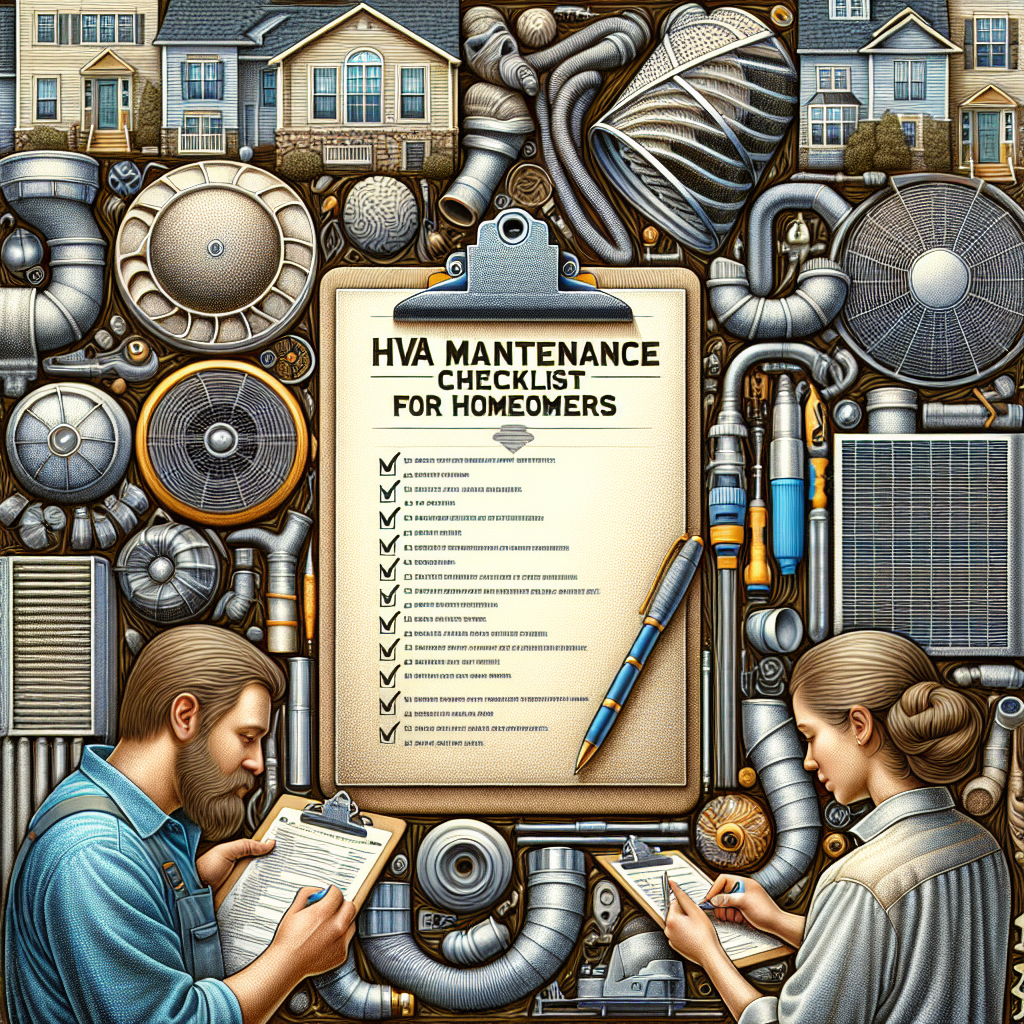As homeowners, we often take for granted the comfort provided by our heating, ventilation, and air conditioning (HVAC) systems. However, without proper maintenance, these systems can run inefficiently or even break down when we need them the most. Keeping your HVAC system in top shape not only ensures a comfortable living environment but also extends its lifespan, improves energy efficiency, and reduces utility bills. This comprehensive HVAC maintenance checklist will help you stay on top of your system’s needs throughout the year.
Why Regular HVAC Maintenance Matters
Maintaining your HVAC system is about more than just comfort; it translates into significant cost savings and health benefits. Regular inspections help avoid costly repairs and emergency replacements, and they can also enhance indoor air quality, preventing allergens and pollutants from circulating in your home. Consequently, this maintenance checklist is a crucial tool for any responsible homeowner.
Seasonal HVAC Maintenance Tasks
It’s essential to divide HVAC maintenance into seasonal checks—a proactive approach ensures your system is prepared for temperature extremes. Below are the tasks you should consider for each season.
Spring HVAC Maintenance
Spring is the perfect time to prepare your cooling system for warmer months.
-
Change Air Filters
- Check and replace air filters every one to three months, depending on usage. Clogged filters can decrease airflow and diminish air quality.
-
Inspect the Outdoor Unit
- Clear debris, leaves, and dirt from the outdoor condenser. Ensure nothing obstructs airflow around the unit.
-
Check Thermostat Settings
- Ensure the thermostat is functioning correctly. Consider upgrading to a smart thermostat for improved energy efficiency.
-
Clean the Evaporator Coils
- Dust and dirt settle on the coils over time. Gently clean them to ensure efficient operation.
- Schedule a Professional Tune-Up
- A certified technician can identify potential issues before they become serious problems.
Summer HVAC Maintenance
Summer is peak usage time for air conditioning systems. Paying attention to these details can optimize performance.
-
Monitor Temperature Fluctuations
- Keep an eye on your system’s cooling efficiency. If you notice significant temperature inconsistencies, it may be time for a service call.
-
Check Voltage and Amperage
- Electrical issues can arise with increased use. Monitoring this can prevent potential breakdowns.
-
Seal Air Ducts
- Look for signs of leaks in your air ducts. Sealing gaps can improve efficiency and save on energy costs.
- Inspect Insulation
- Confirm that insulation around ducts is intact to prevent energy loss.
Fall HVAC Maintenance
As the temperature begins to drop, it’s time to shift focus back to heating systems.
-
Change Air Filters Again
- Swap out or clean filters to prepare for the heating season.
-
Inspect and Clean the Heating Elements
- Whether you have a furnace or heat pump, ensure components are clean and functioning properly.
-
Check Carbon Monoxide Detectors
- With heating systems in use, ensure detectors are functional. Replace batteries annually.
- Review the Heating System’s Efficiency
- Consider the age of your furnace. If it’s over 15 years old, consult a professional about replacement options.
Winter HVAC Maintenance
As the cold winter months roll in, ensuring the heating system operates efficiently becomes paramount.
-
Keep Vents and Registers Clear
- Make sure that furniture and decor aren’t blocking airflow from heating vents.
-
Monitor Humidity Levels
- Address dry air issues with humidifiers as needed to keep indoor air quality healthy.
- Inspect Heating Hoses
- Look for leaks or cracks in hoses and ductwork to prevent heat loss.
Additional Year-Round Maintenance Tips
In addition to seasonal tasks, several ongoing maintenance practices can keep your HVAC system running smoothly.
Regular Inspections
- Schedule Annual Professional Inspections: A trained technician can spot potential issues that may be missed during DIY inspections. Aim for a professional tune-up at the beginning of each season.
Indoor Air Quality
- Invest in Air Purifiers: Consider air purifiers or ionizers, particularly if any family members have allergies or respiratory issues.
Smart Technology
- Utilize Smart Thermostats and Sensors: These devices optimize energy usage and allow you to monitor your home’s temperature from your smartphone.
Conclusion
Implementing this HVAC maintenance checklist will help ensure your system is operating at optimal levels all year round. By taking proactive steps, you not only improve your home’s comfort but also save on energy costs and avoid costly repairs down the line. Remember, regular maintenance is key to extending the life of your HVAC system and ensuring a safe, healthy home environment. So roll up your sleeves, give your HVAC system some love, and enjoy the comfort it brings!


